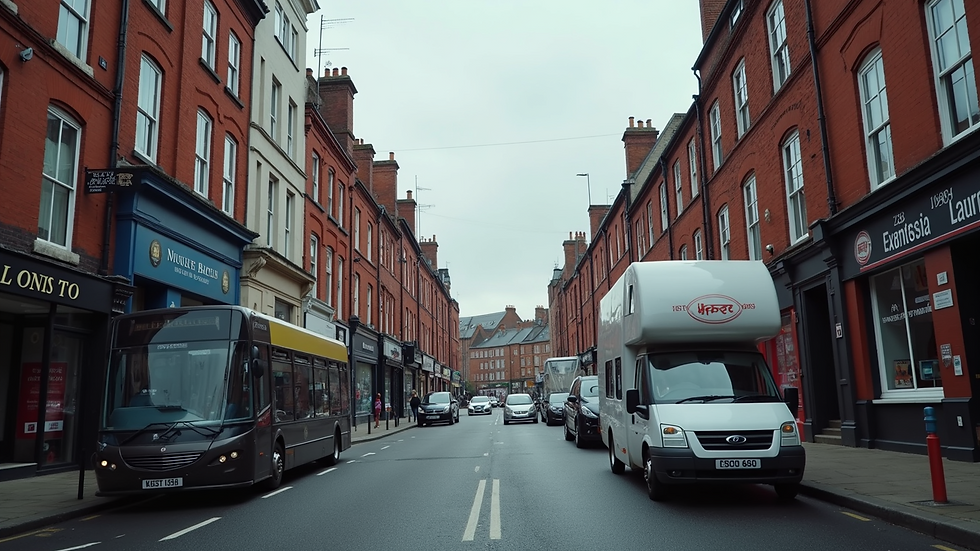Who Really Has the Most Elevators Birmingham Worcester or Wolverhampton
- bobby lang
- Aug 11
- 4 min read
When you think about urban development, elevators play a key role. They symbolize a city's growth, efficiency, and ability to welcome everyone, regardless of mobility challenges. In the UK, Birmingham, Worcester, and Wolverhampton present different tales through their architectural choices and elevator counts. If you've ever wondered which city has the largest number of elevators, you're in for an exciting insight.
In this blog post, we’ll take a detailed look at the elevator counts in these three cities, their architectural highlights, and what these figures signify for both residents and visitors. Let’s dive right in!
A Brief Overview of Each City
Birmingham
Birmingham is the second-largest city in the UK, with a population exceeding 1.1 million. It's renowned for its rich industrial background and a dynamic cultural scene. The city features a mix of high-rise buildings, shopping centers, and residential complexes. Over the last decade, Birmingham has undergone significant redevelopment, leading to an uptick in the number of elevators in both commercial and residential structures. For example, properties like The Cube and the BT Tower have multiple elevators, making it easier for residents and visitors to navigate their heights.
Worcester
Worcester, smaller in size with around 100,000 inhabitants, is distinguished by its historical landmarks and stunning countryside. It may lack the skyscrapers seen in Birmingham, but Worcester has its share of multi-story buildings, especially in its commercial sector. For example, the CrownGate Shopping Centre has several floors and is equipped with elevators, enhancing accessibility. The historical mix—with buildings like the Guildhall standing proudly without elevators—adds unique charm to the city's skyline.
Wolverhampton
Wolverhampton, home to approximately 260,000 residents, showcases a blend of industrial heritage and modern development. The city has various multi-story residential and commercial buildings outfitted with elevators. The University of Wolverhampton, known for its growing student population, features several elevated facilities that cater to accessibility. With ongoing improvements in infrastructure, the city appears poised to see a further increase in its elevator numbers.
The Elevator Count: A Closer Look
Birmingham's Elevator Landscape
Birmingham's extensive urban development has led to a significant number of elevators. The cityscape features prominent high-rise buildings, with The Cube alone housing around 10 elevators. These serve the numerous restaurants and businesses occupying its many floors. Additionally, with ongoing housing projects like the 1,000-unit rental scheme at the former post office site, it is estimated that Birmingham adds approximately 100 new elevators annually, further solidifying its position as the city with the highest count.

Worcester's Unique Offerings
Worcester offers a unique blend of old and new architecture, which includes several modern multi-story buildings equipped with elevators. While the historic Cathedral lacks an elevator, new constructions like the Cathedral Plaza meet contemporary accessibility needs with at least five elevators available, effectively serving both shoppers and visitors. Eventually, as the city embraces urban development, the aim is to balance preserving heritage with modern accessibility.
Wolverhampton's Growing Infrastructure
Wolverhampton is actively upgrading its infrastructure to meet the demands of its growing population. A prime example, the University of Wolverhampton has expanded its campus with new buildings featuring ample elevators. The One Wolverhampton development, which includes commercial space and student accommodations, also emphasizes accessibility with multiple elevators strategically placed throughout. As the city grows, it's realistic to expect an increase of around 15-20 new elevators per year.
Comparing the Numbers
So, which city really holds the title for the most elevators? Although exact figures are elusive due to ongoing construction and upgrades, we can make informed estimates based on current developments:
Birmingham: It is estimated that Birmingham has over 500 elevators, fueled by its ever-expanding urban landscape.
Wolverhampton: Currently, Wolverhampton likely has around 200 elevators, given its focus on modernization.
Worcester: The numbers here are lower, with an estimated 100 elevators, emphasizing residential options and commercial facilities within the city center.
The data points illustrate how Birmingham's continuous growth puts it at the forefront of this competition, while Wolverhampton and Worcester are making strides in their respective developments.
The Importance of Elevators in Urban Life
Elevators are indispensable in urban settings, particularly in cities with high-density buildings. They improve accessibility for those with mobility limitations and enhance the overall efficiency of buildings. Elevators facilitate quick movement, which is crucial in high-traffic commercial areas.
Statistics reveal that in larger towns, nearly 70% of residents rely on elevators for access to their homes or workplaces. As urban populations rise, the demand for efficient elevator systems is likely to increase, underscoring their vital role in urban life.
Future Developments and Trends
As cities evolve, the need for elevators will only increase. More residents are moving into city centers, contributing to a demand for vertical living solutions. Innovations in elevator technology, such as energy-efficient models, are on the rise, addressing sustainability in urban development.
For instance, new designs focus on reducing power consumption by up to 30%, integrating smart technology for improved user experience. Birmingham, Worcester, and Wolverhampton are all poised to benefit from these advancements in the coming years.

The Final Word
In the friendly contest of elevator counts among Birmingham, Worcester, and Wolverhampton, Birmingham clearly leads with its robust urban development. Wolverhampton is on its way to becoming a serious contender with its focus on improving infrastructure, while Worcester charmingly balances historical character with modern accessibility.
Elevators are more than simple transport systems; they are vital for enhancing the urban experience. As growth continues in these cities, elevators will significantly shape how residents and visitors interact with their surroundings.
So next time you find yourself in Birmingham, Worcester, or Wolverhampton, take a moment to appreciate the elevators making your journey smoother. It’s a small reminder of how these cities are striving to become more accessible and user-friendly.





Comments